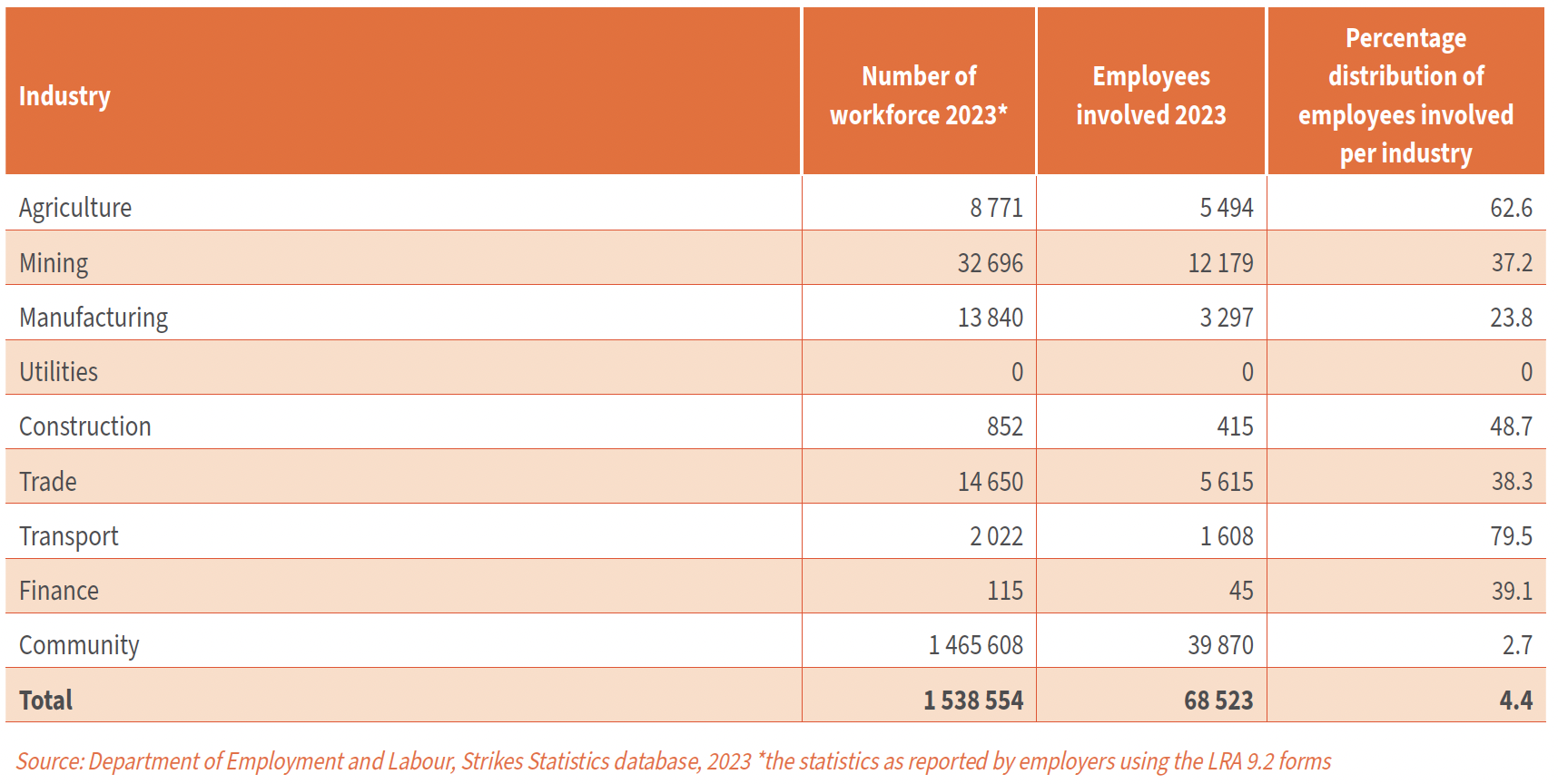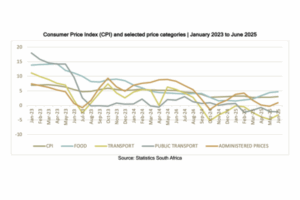It is essential to know the legally permissible courses of action and alternatives outside the legal framework, and existing provisions in collective agreements and the dispute resolution procedures outlined in the Labour Relations Act (LRA) is essential.
A strike is a collective action undertaken by workers. It involves workers collectively withholding their labour to compel the employer to address their grievances.
Some major strikes in South Africa
Distribution of employee’s participation in work stoppage by industry, 2023 (as per the International Standard Industrial Classification)

Types of strikes
All strikes share a common characteristic: a refusal to work. Strikes can happen at various workplace levels, such as the plant level or spanning multiple plants.
Planning the strike
Consider the following questions when planning a strike:
– Are workers prepared to take action?
– How crucial is the demand?
– What type of strike is being contemplated?
– Do you have a comprehensive strike plan or action program?
– Have you conducted thorough research?
– Can you secure industrial and political support?
– How resilient is the company?
– Should legal avenues be pursued for striking?
– What is the stance of your family and community?
– Have you arranged media coverage and promotion and education materials?
- Are workers prepared to take action?
- How important is the demand?
- What type of strike are you planning?
- Do you have a strike plan or programme of action?
- Have you done your research?
- Can you get industrial and political support?
- How strong is the company?
- Should you follow legal channels to strike?
- What is the attitude of your family and community?
- Have you organised the media (pamphlets and placards and other publicity and educational materials, etc.)?
Organising the strike
Management strategies
Evaluating the strike
Reflection helps to improve approaches and tactics. Take the time to identify the lessons learned and share them in the organisation. The strike victory might be a temporary advance. Confront any attempts by the management to roll back the gains made by workers.
Checklist
- How well did you plan?
- How strong was your organisation of the strike?
- How strong was the support that you managed to build?
- What levels and forms of solidarity were given by other workers?
- What new and creative forms of solidarity action emerged out of the strikes from which you can learn
- What problems did you have and how did you deal with them?
- How effective was the strike?
- What were management’s counter strategies and tactics?
- How were they implemented?
- Did you see these things coming and how did you deal with them?
Source: LRS/TULEC manual for organisers







